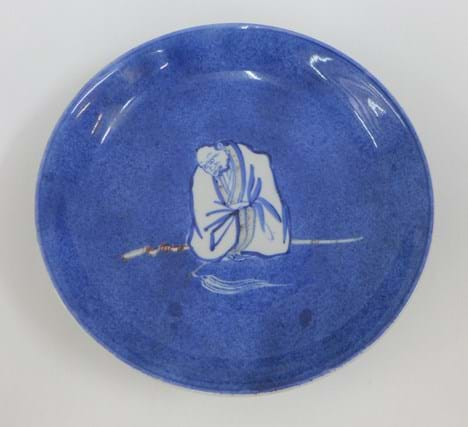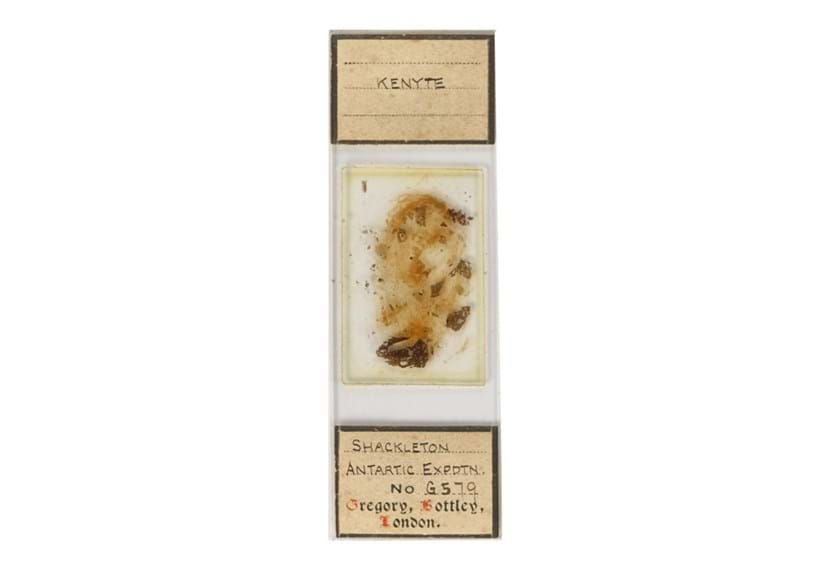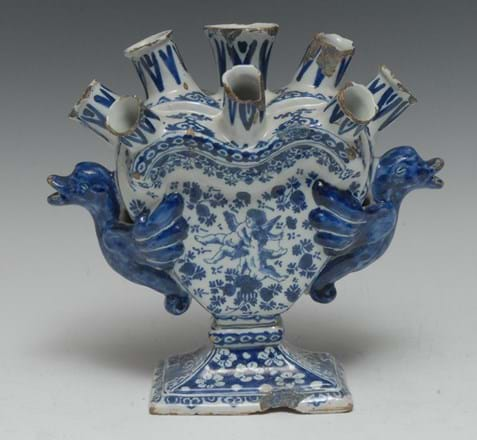Sold on thesaleroom.com: a rare Delft tulip vase, a Kangxi dish and a souvenir of Shackleton’s Nimrod exhibition
04 June 2020 From the thousands of lots that appear at auctions every week on thesaleroom.com, here we focus on three exceptional lots bought by online bidders this monthA microscope slide marked for Shackleton’s Antarctic Expedition, £3800 at Flints Auctions
A microscope slide from the Nimrod Expedition
One lot that drew strong competition at Flints Auctions on May 21 was this microscope slide containing a piece of kenyte – a mineral with a glassy texture found in some of the most inhospitable parts of the world.
Labelled Shackleton Antarctic Expdtn, it was seemingly one of the geological specimens collected by scientists during in the British Antarctic Expedition (better known as the Nimrod exhibition) of 1907-09.
The exhibition party, that reached a latitude less than 100 miles from the pole, also achieved the first ascent of Mount Erebus, Antarctica's second highest volcano and a source of kenyte.
Another larger piece of kenyte collected at Cape Barne on Ross Island can now be found in Australia’s Museum of Applied Arts & Sciences. It was presented by Sir Ernest Shackleton himself to the University of Sydney in 1909.
The standard size slide at Flints was estimated at just £40-60 but it attracted solid interest before selling via thesaleroom.com at £3800.
A Delft tulip vase by the De Metale Pot factory
This 8.5in (21cm) Delft blue and white tulip vase is typical in style and form of the De Metale Pot (The Metal Pot) factory.
Similar heart-shaped vases with stylised dolphin handles are known in a number of collections, some examples marked LVE for Lambertus van Eenhoorn, the De Metale proprietor from 1691 until 1721.
Some damage is to be expected in Dutch tinglazed earthenwares of this date: it is perhaps as early as 1690.
The £100-150 estimate at the May 20 auction at Bamfords of Derby attracted multiple bidders and it was eventually knocked down to a buyer on thesaleroom.com at £4200.

A Kangxi powder blue and underglaze red saucer dish
Estimated at just £50-70, this Chinese porcelain saucer dish sold for £7850 at Edinburgh saleroom Franklin Brown on May 23.
Although only tersely catalogued it almost certainly dates from the Kangxi period (1661-1722) – an era when the imperial porcelain factories at Jingdezhen, inactive during the upheavals of the late Ming period, were reopened and a new era of high-quality production and technical innovation begun.
This dish, marked with a lozenge issuing floral tendrils, displays a powder blue ground with the central figure of a travelling lohan with staff and flywhisk highlighted in under-glaze red.
He may be the one of the ‘fighting monks’ from the widely-read Chinese epic Shuihu zhuan or the monk Xuanzang (600-664), who made a 17-year journey to bring Buddhist teachings from India to China. Similar dishes of this scarce type are known in a number of major collections.

